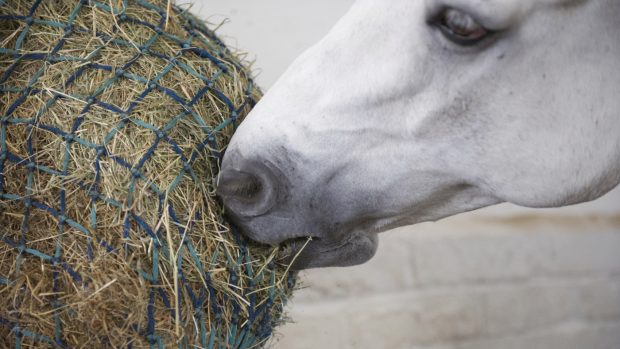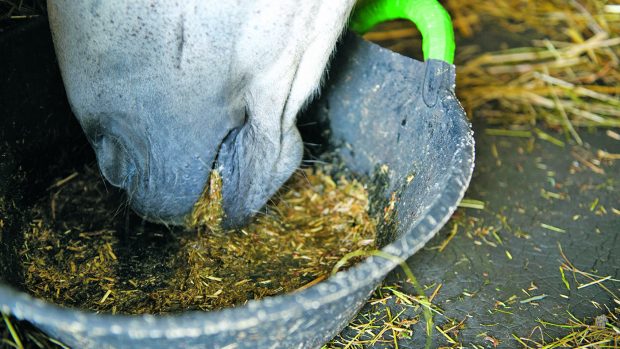Whatever you feed your horse this winter, you are likely to be giving far more forage than concentrate feed. But forage quality is variable in its nutritional value, as well as its dust levels, and is dependent on the growing season and the conditions at baling.
A prolonged dry period followed by a wet May led to abundent high-quality first cuts. Hay that I recently analysed was not only dust-free, but also mould-free — an unheard of combination most years.
But not all hay will be this clean as its quality is determined by its storage conditions after baling, as well as by the weather at cutting.
When storing newly-baled hay, small spaces should be left to allow air to move around the bales. Without these spaces heating can occur, encouraging mould to grow. Such bales can be easily recognised as matted and musty.
The hot weather has also meant a much shorter time between cutting and baling. On a nutritional basis this means that the sugar content will be raised. If this hay is introduced suddenly, horses are likely to scour and it may have an adverse effect on the animal’s behaviour.
This year’s haylage crop seems to be drier than in previous years, with the normal 60% dry matter being closer to 70%. While this means that you’re paying for less water, a dry bale is difficult to compress and make fully airtight. This means there is room for microbial activity, which can result in the mould you are trying to avoid by using haylage so watch out for this.
Assessing quality
- Analyse both first and second crops of hay as the nutritional value will differ
- For haylage, get a nutrient analysis done or request a copy of the manufacturers’ analysis. The quality will effect the nature of the hard feed you are using. A low-fibre, high energy haylage is best matched with a high-fibre, low energy feed
- For hay and haylage, analyse crude protein and fibre. A water-soluble carbohydrates test will indicate the sugar content. In addition, haylage should be tested for moisture and preservation quality, plus pH, ash, and ammonia
- Forage for performance horses should be tested for calcium, phosphorus, magnesium and sodium. For growing horses, test for copper, zinc, maganese and selenium
|
||
 |
||


 Get up to 19 issues FREE
Get up to 19 issues FREE TO SUBSCRIBE
TO SUBSCRIBE 



